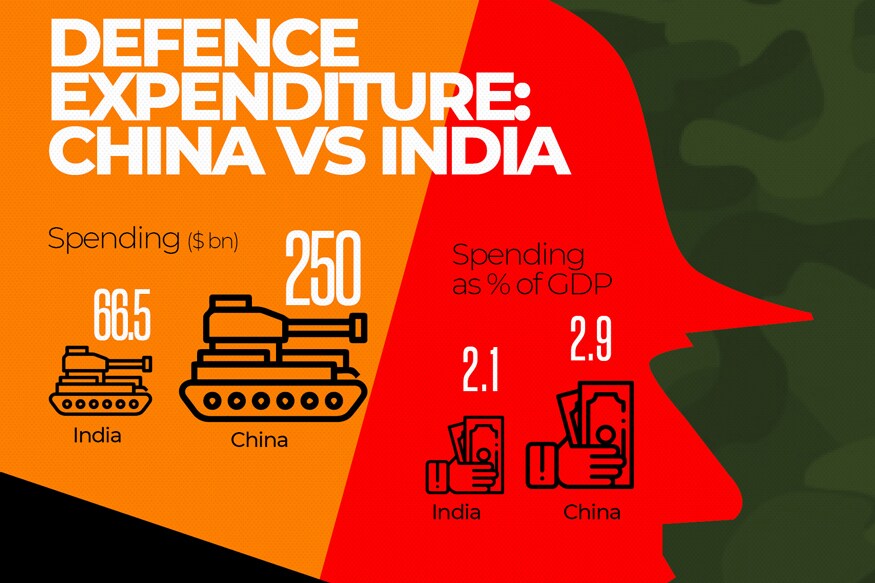SoftBank Group is the big mover and shaker in our country’s startup ecosystem as well.
Harish Puppala | Rakesh Sharma
Softbank – it’s a name that comes up often these days, as far as business and startups are concerned. SoftBank Group is the big mover and shaker in our country’s startup ecosystem as well. In fact, Softbank had invested, according to Fortune India, over $7 billion in India between 2014 and February 2018 in high-growth startups in e-commerce, ride-hailing apps, budget hotel aggregation and asset managing, grocery delivery services, and payment platforms, among others. Between 2017 and 2018 alone, it invested a whopping $4.3 billion (or 27,163 crores) in Indian companies. By April 2018, that number had touched 8 billion USD. BY Novermber 2018, the group’s vision fund had pumped a cumulative $5 billion into companies ranging from fintech group Paytm to hotel chain Oyo Rooms. It had bet so big on Indian startups, the Financial Times reported late last year, that the scale and pace of its investments prompted some in India’s financial and technology industries to even question their prudence.
With the most popular current name in investment looking to launch an IPO of its famous $100 billion Vision Fund, now might be a good time to look at what SoftBank Group has done in India, and what its future plans are.
SoftBank’s audacious plans
Before we look at SoftBank’s India moves, let’s take stock of what its overall situation is. SoftBank Group Corp. is considering fundraising plans, including a public offering of its $100 billion investment fund and the launch of a second fund of at least that size, as it looks to seize on an exploding startup scene, according to the Wall Street Journal. SoftBank is reportedly negotiating with the sultanate of Oman for an investment of $1 billion or more in its existing $100 billion Vision Fund, which raised nearly all of its cash from Saudi Arabia and Abu Dhabi, according to WSJ. It was reported in February this year that Saudi Arabia’s sovereign wealth fund, Public Investment Fund (PIF) of Saudi Arabia, had put $45 billion into SoftBank’s $100 billion Vision Fund.
The fund was set up in 2017 and has become the world's largest technology investment fund. In fact, the pace of deal making set by founder and Chief Executive Masayoshi Son is said to be so frantic that the fund’s staff is struggling to keep up. Son has invested nearly all the money that the Vision Fund took in just about two years ago.
Some upcoming IPOs of companies it has invested in—including Uber and WeWork.—will free up some money, but not enough to fund everything that CEO Son wants to buy. The fund plans to double its staff to 800 people from 400 over the next 18 months, one of his top deputies said at a conference in Los Angeles. That compounds the pressure to raise more money so they can be paid to hunt for deals across the globe. The Vision Fund IPO is the most ambitious plan of all, and will likely happen after the fund is fully invested. According to a WSJ analysis, the group hopes to create a smaller version of Warren Buffett’s Berkshire Hathaway - one that is loaded with young technology companies, many of which have yet to turn a profit, instead of a stable of well-established utilities, insurers and energy companies.
If successful, it would tap into a new pool of money—small time investors who typically are unable to invest in venture-capital funds due to regulations meant to protect unsophisticated investors from risky assets. But that is probably a smidge too optimistic - while SoftBank executives are said to be working to overcome those regulations, it might not happen. Another barrier is that some of the fund’s hottest investments are set to go public themselves this year, which would reduce the allure of its own offerings. Yet another challenge comes from the state of Oman’s economy. The country is under economic pressure, with swelling dollar debts and dwindling foreign exchange reserves.
So far, investors in SoftBank’s fund have included the Saudis, Abu Dhabi, a handful of corporations, including Apple and Qualcomm, whose fortunes are intertwined with those of SoftBank, parent of a major Japanese cellphone carrier and majority owner of U.S.-based Sprint Corp. SoftBank is trying to sell Sprint to T-Mobile US Inc., but the deal has run into resistance from regulators.
And payouts to the fund’s shareholders of about $6 billion have mostly come from just two investments - the sale of Indian e-commerce site Flipkart to Walmart, and gains in shares of publicly traded Nvidia Corp.
So that, ion brief, is the state of SoftBank’s global investment plans.
SoftBank in India
Let’s now take a look at what it plans to do in India. As we’ve mentioned earlier, it has invested upwards of $8 billion in this country, including nearly half of India’s ten unicorns. In comparison, Tiger Global LLC and South African Naspers had invested $3.63 billion and $2.9 billion, respectively, by April 2018.
When it entered India in 2014, then vice-president Nikesh Arora, a former Google executive handpicked by Son, directed SoftBank’s fast work of snapping up stakes in a bunch of leading consumer internet start-ups. By the close of 2015, it had deployed an estimated $2 billion in five firms—Delhi-based e-commerce marketplace Snapdeal, Bengaluru-based Ola, Mumbai-based property search platform Housing, Gurugram-based grocery delivery service Grofers as well as OYO. Within 12 months, Arora had brought SoftBank abreast with Tiger Global, the largest and most influential investor in the technology start-up market in India for well nigh a decade. Some analysts claim it also contributed to driving up valuations further in an already overheated market.
Alok Sama, chief strategy officer with SoftBank Group told Fortune last year, “The notion of ‘leapfrogging’ is an essential part (of) our Indian investment thesis. For example, SoftBank’s bet is that India never approaches car ownership thresholds experienced in the West, but rather migrates straight to a shared transportation model. Similarly, India will never likely have scaled organised retail in the form of physical department stores, but will gravitate directly toward mobile e-commerce. In finance, credit card penetration rates will likely never approach those seen in the West, but we will move straight to a tech-enabled digital finance model.” Such observations led to SoftBank placing major bets on companies like Ola, Flipkart and PayTm. Sama added, “Along with Oyo and Hike, both of whom have developed a uniquely local offering, these investments are the cornerstone of our Indian digital investment strategy.”
The truth is, with its $100 billion Vision Fund, SoftBank is well equipped to shape a few market leading consumer Internet firms in India, hence the industries themselves, according to industry insiders.
Earlier this week came news via CNBC-TV18 that SoftBank is planning to earmark $20 billion for India. It is likely to invest this amount over a period of five to seven years, said people familiar with the matter. The SoftBank Group had committed investment to the tune of $10 billion to invest in new areas like solar and technology-led businesses. What’s interesting is the keenness of the Saudis in the Indian market. In February, PIF managing director and chief executive Yasir Al-Rumayyan and Rajeev Misra, CEO of SoftBank Investment Advisors, met selected journalists in India for a brief glimpse into the playbook of the largest agglomeration of capital in the global venture capital business. As Mint observed, “The Saudi interest is clear. It wants to tap into the vast Indian markets, not directly with products and services, but through investments in home-grown startups by way of the SoftBank Vision Fund, even while it looks for other such strategic partners... Oyo Rooms, Delhivery and FirstCry aren’t just SoftBank investments in India, but also vehicles for the Saudis to understand the Indian market, as well as platforms for expanding into the country.”
After a flurry of investments, SoftBank is also looking at creating what Misra called “an ecosystem of tech companies", which will feed on each other’s strengths and leverage synergies across the world. A case in point is the synergy between Oyo, a hospitality company, and work spaces sharing company WeWork, for co-living spaces. Further, SoftBank is now pushing Indian startups to get into the Saudi market as the kingdom opens up to businesses from abroad. The group is also well poised for an early entry into new ventures, especially after its successful exit from Flipkart and Nvidia., which gave the fund a return of nearly 25% in less than two years, with an average investment period of just nine months. In 2020, SoftBank will see a flurry of exits, mostly through initial public offerings.
Mistakes made, and lessons learnt
Masayoshi Son had visited India in 2017. He famously declared at the time in an interview, “There are good times and bad times but SoftBank is always there." Talk about a longterm plan.
Regarding the India operations, Rajeev Misra said he does not worry about overpaying when investing in India’s tech start-ups, because its multibillion-dollar bets will pay off as mobile internet use booms. He explained, “With the proliferation of smartphones, cheaper data, faster networks, the penetration of internet services to the masses has increased dramatically...When we invest, we believe the returns will be three to four times the investment — so how does it matter if we pay 10% or 20% more or less?”
Critics claim that since SoftBank started making investments in India, it is rushing to deploy capital. One Mumbai-based technology analyst told the Financial Times, “They’ve got a big hammer and they’re looking for nails.”
Harish HV, a former partner with Grant Thornton, said, “SoftBank’s early investments have not paid off. Many of its investments, which were early stage, were to be written off by the Group. It has then reworked on the strategy and started focussing on matured start-ups/companies instead of the emerging ones.” An analysis in BusinessLine clarified that while Tiger, Naspers and other such investors like mid- and later-stage funding in market leaders across segments such as Flipkart and Ola, SoftBank chose the second and third major players -a move that was seen as ambitious by many experts at the time. Cut to last year, and while Tiger Global and Naspers slowed down their investments in the Indian market, SoftBank was scaling up. It funded almost all the big players in the country including a $2.5-billion round in Flipkart and was touted as the largest investment by a single investor in any online company in the Indian market until then. Then there was the $1.5-billion in Alibaba-backed Paytm, the largest player in the fintech/payments space.
That brings us to the downside of SoftBank’s strategy in India.
Take, for instance, PayTm. It has been one of SoftBank’s biggest bets in this country - the $1.4bn investment in Paytm, a mobile payments company that faces competition from AMerican rivals WhatsApp and Google was highly touted by Misra. He said, “Paytm is a substantial leader over WhatsApp.” He said the Indian company has more than 300m registered users, adding, “We have full faith that it can maintain a lead.” However, a report in ET earlier this month claimed “WhatsApp currently has over 300 million users in India (while Facebook has another 300 million in the country). Once WhatsApp starts a peer-to-peer (P2P) UPI-based payments service, the sheer numbers will take it beyond Paytm which last reported over 230 million users.” Another Economic Times analysis claimed Paytm Mall's losses continued to rise. In the financial year 2018, the company, according to the ET report, posted a loss of nearly Rs 1,800 crore on revenue of Rs 774 crore. According to Forrester Research, the market share of Paytm Mall almost halved in 2018- to 3 per cent from 5.6 per cent in 2017. Thomas Geroge, According to Thomas George, Senior Vice President and Head CyberMedia Research, “Paytm Mall's primary catchment segment was its payment wallet customers base. This base is not growing as anticipated.”
To make matters worse for Paytm, and its investor SoftBank, Reliance Industries declared its intent to enter the e-commerce space with an aim to “transform the lives of around three crore merchants across the country, enabling them to do all that large enterprises and e-commerce giants are able to do with the help of technology.” For Paytm Mall, that is decidedly not good news.
A few years ago, Snapdeal saw its valuation jump to $2 billion with SoftBank’s investment. Ola’s valuation jumped three times to more than $600 million. Housing, a two-and-a-half-year-old firm when SoftBank led a $90 million round, was valued at more than $200 million, courtesy the premium paid by its new benefactor. The valuations of Snapdeal and Housing.com fell dramatically. Housing.com was later sold to PropTiger for about $70 million, where as SoftBank had invested close to a $100 million in the company. But SoftBank continued to pump investment into Ola, which is locked in a battle with Uber’s Indian subsidiary. Since SoftBank acquired a $9bn stake in Uber in December 2017, speculation has been rife that it seeks a merger between the two businesses. Misra had played down this angle, saying, It’s up to the companies, and adding that competition issues could complicate any attempt at a merger. A venture capitalist whose firm is a co-investor in a SoftBank-backed company, told Mint in 2017, “I’m not sure what their investment strategy is… they’ve clearly made so many mistakes here.” Rajeev Misra, of course, denies that SoftBank had overpaid for its Indian investments, saying SoftBank invested in Paytm at half the company’s $10bn valuation, and earned a 50% return when it sold its stake in online marketplace Flipkart.
Bullish on India
Quibbles aside, as Masayoshi Son said, “...SoftBank is always there."
In October last year, SoftBank Vision Fund was reportedly evaluating investments worth $200-250 million each in baby and mother care portal FirstCry and logistics company Delhivery. The investments would eventually see Delhivery valued at around $1.6 billion.
At the time, SoftBank was also in discussions to double its investments in the hyperlocal space with a $120-150 million infusion in Grofers, a competitor to Big Basket. SoftBank has a separate team in India led by former Bharti Airtel chief executive Manoj Kohli for renewable energy unit SB Energy, a three-way joint venture with Foxconn and the Bharti Group. All those happened after SoftBank had exited Flipkart in the now-famous a transaction which delivered returns of over $4 billion.
Manoj Patkar, Executive Director & Partner, 7i Advisors LLP, told BusinessLine, “SoftBank’s strategy, to back Unicorns, has yielded positive results in the short-term in India. SoftBank dominated the Indian market in 2017 having invested in four out of the top 5 most-funded technology companies – each of which is a market leader in their respective market categories.”
In November 2018, the Economic Times reported that SoftBank roped in Norwest Venture Partners’ Sumer Juneja as its country head for India, ending an over-three-year search for an executive to lead investments in one of its highly lucrative markets. As part of Norwest Venture Partners, Juneja first led an investment in Swiggy in 2015 and served on its board as an observer.
In April this year, SoftBank was in the news once again as it was reportedly looking to make a $2-3 billion investment in India's fastest-growing telecom firm Reliance Jio at a time when Mukesh Ambani was looking to deleverage business by selling stakes. BusinessToday reported, “This comes on the back of reports of Saudi giant Aramco in discussions to buy a 25% stake in Reliance Industries' refining and petrochemical business for USD 10-15 billion.” A JPMorgan research report observed, “Softbank has long been seen as a potential investor in Jio...For the past 2 years, our conversations with investors have highlighted expectations of Softbank investing in Jio and hence the news flow is not surprising."
Masayoshi Son told stakeholders at SoftBank World 2017, an annual conference, “SoftBank is aiming not just at one technology, one business model, one brand to drive the world. No. We want to form a coalition of like-minded people, comrades, entrepreneurs… we want to form a group, everyone to work together to create a revolution.”
If he is successful, it will certainly be fascinating to see his vision come to life.




























































